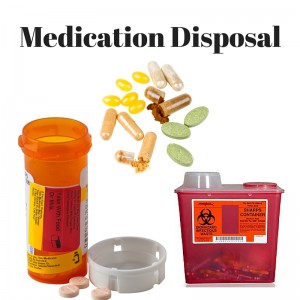
by admin | Apr 14, 2016 | Doctors Perspective
Dr. Sinda and our staff recommends quality products from professional supplement and skincare companies who share the same commitment to your health – optimizing your health and skin. The medical grade products we offer meet rigid testing standards to ensure scientifically-backed ingredients at clinically appropriate dosages. We trust these companies because they are accountable for the results we get with our patients.
What can go wrong when you buy supplements online?
Many of our patients often take our supplement recommendations and turn to internet sites for convenience of online shopping. While we understand the desire to save time and money, there are some risks that patients are often unaware of when purchasing supplements online. Please read further.
Quality Control
Supplements purchased on sites like Amazon may sit in large, uncontrolled warehouses not intended to store medications or supplements. Unregulated for temperature and humidity control, these conditions can have a significant impact on product potency and viability. Read more:http://www.businessinsider.com/brutal-conditions-in-amazons-warehouses-2013-8
Tampered Product
To conceal their identity, internet resellers often deface product labels and alter important tracking information. They will rub off expiration dates, manufacturer lot numbers and bar codes all of which are crucial for the manufacture to guarantee its efficacy. Read more: http://patch.com/connecticut/oxford-ct/why-you-should-never-buy-supplements-on-amazon-or-ebay_d0e64f41
Counterfeit Product
As professional supplements grow in popularity, so does the prevalence of cheap, imitation products camouflaged as professional line supplements. While these products will look the same as the ones in our office, they use inferior raw ingredients that virtually never have correct amount of the active ingredients they are supposed to contain. Read more: http://www.cbsnews.com/news/amazon-struggling-to-keep-counterfeits-off-market-retailer-says/
Please be sure you are purchasing from reliable sources. For your convenience, we offer shipping on all supplements and skincare products. We also can make arrangements for pick up if you can’t get here during office hours. If you are running low, feel free to email, call (952)922-2345 or use this form.

by admin | Jan 28, 2016 | Doctors Perspective
Are you unsure what to do with your unused, left-over, expired prescriptions, vitamins, supplements or injectables, syringes or needles?
There are proper disposal guidelines for medicines and injectables to help reduce harm from accidental exposure or intentional misuse after they are no longer needed.
Here are some guidelines on how to dispose of unused medication and sharps in a way that ensures it won’t fall into the wrong hands or contaminate the groundwater in your area.
Sharps (Needles) Disposal
Some common medications we prescribe for Men such as Pregnyl, HCG, Novarel, and Testosterone, etc. use a needle to administer.
- Talk to your pharmacist about disposal options.
- Subscribe to a regular safe collection service of used needles from your household or use a mail-in program to send in used sharps. Some are listed here:
- Destroy needles at home by purchasing a needle destruction unit available online, in health care stores, and at pharmacies.
- It is still legal in Minnesota, but NOT recommended, to place needles and syringes in a hard puncture proof container, tightly seal the container (duct tape), label the container sharps or needles, and place the container in your household trash. The container cannot be placed in the recycling as the needles and fluids are hazardous waste and pose a danger to the people sorting the material by hand. Some County’s like Washington County accept sharps to be collected at their Environmental Center. Please check with yours.
Disposal of Prescription Medicines & Vitamins
Dispose of unused / left-over prescriptions (bio-identical Progesterone, Estrogen, Testosterone and other prescription meds), over-the-counter medications, vitamins, supplements, and pet medications in the green containers provided in the lobby at various locations in Hennepin County. Needles and syringes not accepted at these locations. Some disposal locations nearby are:
- Edina Hennepin County Library – Southdale, 7009 York Ave. S., Edina
- Minnetonka Hennepin County District Court Ridgedale – 12601 Ridgedale Drive, Minnetonka
- Brooklyn Park Hennepin County Sheriff’s Patrol Headquarters – 9401 83rd Ave N, Brooklyn Park
For more information and rules on disposals, check your County’s website. Here are a few links:
Thank you for your effort for making our communities safer!
Staff at Innovative Directions in Health

by admin | Jan 11, 2016 | Doctors Perspective
If you are in the stages of perimenopause or menopause, you may be experiencing symptoms such as not being able to sleep at night or waking up having no energy because you are totally exhausted!
Night sweats may be preventing you from going back to sleep because you wake up drenched and have to change the sheets and your clothing. Now getting back to sleep is another problem. You are not alone. These symptoms often are mostly likely the result of a progesterone hormone deficiency.
Bio-Identical progesterone comes in different forms such as a troche (lozenge you suck on like a cough drop), triturate (sublingual tablet), cream, capsule, etc. Your body will recognize bio-identical progesterone as it is exactly made to be like your own hormone. Progesterone can also be formulated into several different flavors. Common flavors are peppermint, tangerine, tea berry, chocolate raspberry. If you are currently taking progesterone, ask your pharmacist which flavors they carry.
Progesterone should be taken in the evening or at bedtime (usually 30 minutes before bed) as it may cause drowsiness. Here are two forms of the types of progesterone Dr. Sinda uses most often:
Troche
- Depending on the dose prescribed, you will use either one or ½ of a troche. If your dose is ½ troche; the troche is scored on one side and can easily be cut it into equal halves.
- The dosage is placed between the gum and the cheek, so the hormones are dissolved slowly into the blood stream. It is very important that you do not swallow or chew the troche while it is dissolving. The goal is to have the hormone enter your system through your oral mucosa (skin) rather than being swallowed. It usually takes about 10-15 min for the troche to dissolve and 30 min for a dose to be fully absorbed.
- It is a good idea to brush your teeth about 30 minutes after taking your troche.
- Troches are stored at room temperature between 60 and 80 degrees F or in the refrigerator. Troches can melt so protect from heat and moisture.
Triturate
- A progesterone triturate is sublingual, meaning it is placed under your tongue to dissolve. Depending upon the pharmacy making the triturate it takes about 5 to 15 minutes to dissolve. Sublingual progesterone is not destroyed by stomach acid or broken down by the liver. It fully enters the bloodstream where it can be fully utilized by your organs. Do not chew or swallow the tablet to let it fully absorb.
- Triturates can be compounded up to 100mg so if you require a higher dosage you may consider changing to a troche which can contain a higher dose.
- It is a good idea to brush your teeth about 30 minutes after taking your triturate to avoid dry mouth during the night.
- Triturates are stored at room temperature. Patients often leave them on their night stand to help with compliance. Avoid keeping any medications in the bathroom due to moisture.
Current patients, if you have questions about your progesterone flavoring or dose method, please call your local compounding pharmacy. Progesterone can be customized to meet different needs such as sugar free, gluten free, etc.
If you are wanting to confirm that you have a hormone imbalance it is important to have your hormone levels measured and reviewed by a qualified doctor who prescribes bio-identical hormones and monitors levels and symptoms throughout the year.
If you have any questions about getting started with hormone replacement or your current regimen give us a call at (952) 922-2345 or contact us, we are always happy to help and answer any questions you may have!
Staff at Innovative Directions in Health

by admin | Aug 11, 2015 | Doctors Perspective
Are there any studies on BioIdentical Hormone Replacement?
Yes! We often are asked by patients for information that can be sent to their OBGYN or insurance company regarding bio-identical hormone therapy for menopause, perimenopause or PMS.
Dr. Mahmud published a study in the journal of Gynecological Endocrinology where 97% of the patientsexperienced relief of menopausal symptoms. The article is called “Natural Hormone Therapy for Menopause”. A summary of the article can be read here. If you would like to receive a copy of the full article, contact us.
Dr. Mahmud’s book, Keeping aBreast, Ways to PREVENT Breast Cancer also contains a lot of great information explaining the different hormones and how bio-identical hormone replacement plays a role in helping to prevent breast cancer. A copy of Dr. Mahmud’s book is available for purchase in our clinic.
Additional studies for women Dr. Sinda often references can be looked up via the links below:

by admin | Jul 20, 2015 | Doctors Perspective
Do you eat the same foods every day?
Health problems such as: digestive, headaches, low energy, depression, skin irritations, joint aches, difficulty losing weight and more may be related to a specific food or foods you eat frequently.
Many people with food sensitivities don’t even realize how awful they feel until the “trigger” foods are removed from the diet. Food reactions are a frequently overlooked cause of chronic health issues. Some reactions occur immediately after eating the food (called “food allergy”), but in other cases, symptoms may be delayed by several hours or even days (referred to as “food sensitivity” or “food intolerance”). Removing specific foods from your diet will allow your body to recover and begin to function efficiently again.
So what is FODMAP?
FODMAP stands for Fermentable Oligo, Di, and Mono-saccharides, And Polyols. The acronym is used to describe a specific group of carbohydrates that are poorly absorbed in the small intestine and often cause symptoms such as excess gas, bloating, and diarrhea in certain individuals with irritable Bowel Syndrome (IBS) and other functional bowel disorders.
What carbohydrate foods are FODMAPs?
FODMAP carbohydrates include:
- Certain sugars (lactose and fructose) found in foods such as mile and dairy products, fruit, honey, and high-fructose corn syrup.
- Artificial sweeteners (polyols), especially sweeteners containing sorbitol and mannitol.
- Certain types of fiber (fructans and galactans) found in wheat, beans, and some vegetables.
FODMAP tolerance:
All FODMAPs have the potential to cause unwanted symptoms. Yet, the degree in which FODMAPs are tolerated varies from person to person. An individual’s physical response to certain FODMAPs depends on their own person level of sensitivity. Therefore, some FODMAP groups may trigger symptoms while others might not.
Think of the small intestine as a bucket. Each person has their own size bucket, or unique tolerance for FODMAP carbohydrates. FODMAPs have a cumulative effect. That is, the amount, not just the type of FODMAP consumed matters. When FODMAP intake exceeds the amount the “bucket” can hold (the small intestine’s capacity for digestion and absorption), it overflows into the large intestine. This may lead to gas, bloating, and diarrhea.
The FODMAP approach:
It is important to understand that IBS and other functional bowel disorders are not caused by eating FODMAPs, therefore eliminating FODMAPs from the diet will not cure the disease. However, removing certain FODMAPs from the diet may greatly improve symptoms.
The FODMAP approach takes into consideration tolerance to all FODMAP carbohydrate groups, not just specific foods. Often times in an attempt to ease symptoms, individuals tend to be overly restrictive with their diet. This leads to nutritional deficiencies. The goal of the FODMAP approach is to manage symptoms while allowing for the most varied and nutritious diet possible.
Low FODMAP diet:
A low FODMAP diet aims to minimize gastrointestinal symptoms by removing common high FODMAP foods and replacing them with low FODMAP alternatives. It is intended to be a short-term diet and is usually followed for six weeks or less. It is not to be used as a permanent diet solution. After symptoms improve, high FODMAP foods are gradually added back into the diet in smaller amounts.
FODMAP Elimination diet:
A more aggressive approach is a FODMAP elimination diet. It should not be attempted without the help and supervision of either a Registered Dietitian or healthcare provider. An elimination diet is a temporary learning diet that is used to identify troublesome FODMAPs. It consists of three phases:
- Elimination phase: all FODMAPs are eliminated from the diet for approximately 3 weeks.
- Challenge phase: the body is challenged by reintroducing FODMAPs into the diet in an organized way. Symptoms are observed and problematic FODMAPs are identified.
- Final phase: problem FODMAPs are incorporated back into the diet as tolerated.
Rather than excluding all FODMAPs from the diet, the goal of both diet methods is to eliminate only the FODMAPs that are problematic. With proper management, few, if any foods must be removed from the diet permanently.
Is a low FODMAP diet right for you?
A low FODMAP diet may not be appropriate for everyone. Before beginning a low FODMAP diet, first consult your healthcare provider to eliminate other causes of your symptoms. Low FODMAP diets have shown to be most successful for persons who have:
- An official diagnosis of Irritable Bowel Syndrome (IBS), Inflammatory Bowel Disease (IBD) or other functional bowel disorder with symptoms of excess gas, bloating, abdominal pain, diarrhea/constipation, etc.
- Tried and failed standard therapy (high-fiber diet, increased fluid intake, increased exercise, etc.)
- Ruled out celiac disease as a possible diagnosis. This is important as restriction wheat from the diet will affect the accuracy of future celiac testing.
- Regular or irregular intake of high FODMAP foods.
- The desire and ability to modify their diet.
**Additional testing such as lactose and/or fructose breath tests is helpful (bot not essential) prior to beginning a FODMAP diet.
Enlist the help of a Registered Dietitian:
If it is determined that a low FODMAP diet would be beneficial to you, consulting a Registered Dietitian (RD) who specialized in gastrointestinal nutrition can increase the likelihood of your success. The RD will help to identify major FODMAP culprits in your diet and develop an individualized diet plan centered around your eating habits and food preferences to improve both symptoms and quality of life.
Try these low- FODMAP foods
| Fruit |
Vegetables |
Grain Foods |
Milk Products |
Other |
| Banana, blueberry, boysenberry, cantaloupe, cranberry, grape, grapefruit, honeydew melon, kiwi, lemon, lime, mandarin oranges, orange, passion, fruit, raspberry, rhubarb, strawberry *Eat dried fruit in small quantities |
Alfalfa,
bamboo shoots,
bean shoots,
bok choy,
carrot, celery,
endive,
green beans, potatoes,
pumpkin,
spinach,
summer squash, sweet potato,
tomato,
yam,
zucchini |
Gluten-free bread or cereal,
100% spelt bread, rice,
oats,
polenta,
arrowroot,
millet,
psyllium,
quinoa,
sorgum,
tapioca |
Milk:
Lactose-free milk and yogurt, oat milk*, rice milk, soy milk*
*Check for additives
Cheese:
Hard cheeses, brie and camembert
Yogurt: Lactose-free varieties
Ice Cream Substitutes
Gelato or sorbet
Butter
Olive oil
|
Sweeteners:
Sugar* (sucrose)
Glucose,
artificial sweeteners not ending in “-ol”
Honey Substitutes
Maple syrup*, molasses
*small quantities
|
Avoid these foods containing FODMAPs
| Fruit |
Vegetables |
Grain Foods |
Milk Products |
Other |
Apples, apricots,
blackberries,
canned fruit,
cherries, mango, nectarines, peaches, pears, plums,
prunes, watermelon, large amounts of dried fruit or fruit juice |
Artichokes, asparagus, beets, broccoli, Brussels sprouts, cabbage cauliflower, eggplant, fennel, garlic, green bell pepper, leek, mushroom, onion, snow peas, sugar snap peas, sweet corn |
Wheat and rye,
in large amounts
(i.e. bread, crackers,
cookies, pasta) |
Milk from cows,
goats or sheep, custard,
ice cream and yogurt, soft cheeses such as cottage cheese, cream cheese and ricotta |
Sweeteners
Fructose, high fructose corn syrup, honey isomalt, maltitol, mannitol, sorbitol, sylitol
Legumes:
Baked beans, chickpeas, kidney beans, lentils
|
More information about FODMAP can be found here.

by admin | May 27, 2015 | Doctors Perspective
We are now offering Vitamin B12 Injections!Research shows that several conditions have been linked to low levels of Vitamin B12. Without knowing it, many of us are deficient in B12, especially as we age. Vitamin B12 is an important water soluble vitamin important in so many aspects of our health: tissue repair, DNA replication, blood cell production and maintenance of healthy neurologic function.
Supplementation can be helpful in treating symptoms such as fatigue, anxiety, depression and anemia. For many, B12 can boost energy and mood, increase metabolism leading to more energy and potential weight loss, improve memory and ability to concentrate and enhance immunity. Intramuscular injections can be given regularly for long-term therapy because vitamin B12 is only slowly lost from the body. Within 4 to 6 days of receiving a B12 injection, most people experience an increase in their energy level or stamina.
How can a Vitamin B12 Injection help me?
Vitamin B12 shots are designed to provide a boost in energy and a prolonged source of energy to use during the day.
What are the Vitamin B12 Deficiency Symptoms?
Vitamin B12 is unique among all the water-soluble vitamins in that it is not excreted quickly in the urine. Rather, vitamin B12 is accumulated and stored in the liver, kidney, and other body tissues. As a result of this storage factor of vitamin B12, a deficiency in this vitamin may not manifest itself or show its symptoms until after five or six years of diet with inadequate supply of vitamin B12.
Some of the most common symptoms of a Vitamin B12 deficiency are:
- Feeling week, tired or lightheaded
- Memory loss and or disorientation
- Having pale skin, or white spots on the skin, resulting from melatonin becoming absent in the area
What are the Health Benefits of Vitamin B12?
There are advantages to getting Vitamin B12 in the form of Vitamin B12 injections. Because the vitamin is absorbed more quickly into the bloodstream this way, B12 injections can provide a quick energy boost. Many people who get Vitamin B12 injections notice an improvement in their energy level within a few days, if not sooner. In addition to feeling more energy, the shots can be effective in terms of clearer skin, better sleep, improved memory, and feeling less stressed.
Taking vitamin B12 as an oral tablet is another option. However, B12 pills are often not very effective. Vitamin B12 is one of the most difficult nutrients for our bodies to absorb, which is why so many people become deficient.
Where is Vitamin B12 Found?
Unlike many vitamins, B12 is not found in animals or plants; Vitamin B12 is exclusively produced by bacteria. When animals consume plants or drink water contaminated by these specific bacteria, the vitamin ends up being stored in their body, mostly in the liver. The main sources of vitamin B12 are meat, poultry, milk, eggs and fish. Naturally, those who follow a strict vegetarian diet have to rely on vitamin supplements.
How does Vitamin B12 function in my Body?
The fact is that Vitamin B12 is a Micro Nutrient that is used in the process of energy release. Without the presence of Vitamin B12 you could not burn calories and your energy would not be released. One of its key functions is to help your body in the creation of red blood cells. These cells help carry oxygen to your vital organs, including your heart and brain. This oxygen is crucial in providing you the necessary energy to get through each day.
B12 also helps with white cell production, which is vital to keeping your immune system strong, which in turn keeps you healthy. Vitamin B12 is properly maintaining your nervous system and helping to keep nerve cells healthy. This in turn keeps your brain functioning the way it should.
B vitamins also assists in the production and regulation of DNA, which is present in every cell in your body. And since this nutrient is also a very strong antioxidant, it helps fight off free radicals which can lead to cancer. It is important that your body gets some vitamin B12 every day. It helps metabolize the food you eat so you can utilize it for energy. It does this by helping turn the carbohydrates in your food to glucose. When the glucose is released into your system, it gives you energy.
How is Vitamin B12 Deficiency Treated?
Treatment is usually shots of vitamin B12 in your arm or another muscle. Typically injections once a month will reduce mild symptoms of deficiency within a few days. You don’t need to worry about getting too much vitamin B12, because your body will pass extra vitamin B12 out in the urine. Most people feel better within days of beginning treatment.
How often should I have my Vitamin B12 blood level tested?
A vitamin B12 level test measures the amount of B12 in your blood. A baseline test should be done first to determine any deficiency. After consulting with Dr. Sinda, a customized B12 injection schedule with follow-up testing will be created for you that will help to enhance your lifestyle.
If you are interested in knowing where your vitamin B12 levels is at, set up an appointment or talk to Dr. Sinda during your next follow up for a hormone re-check.






